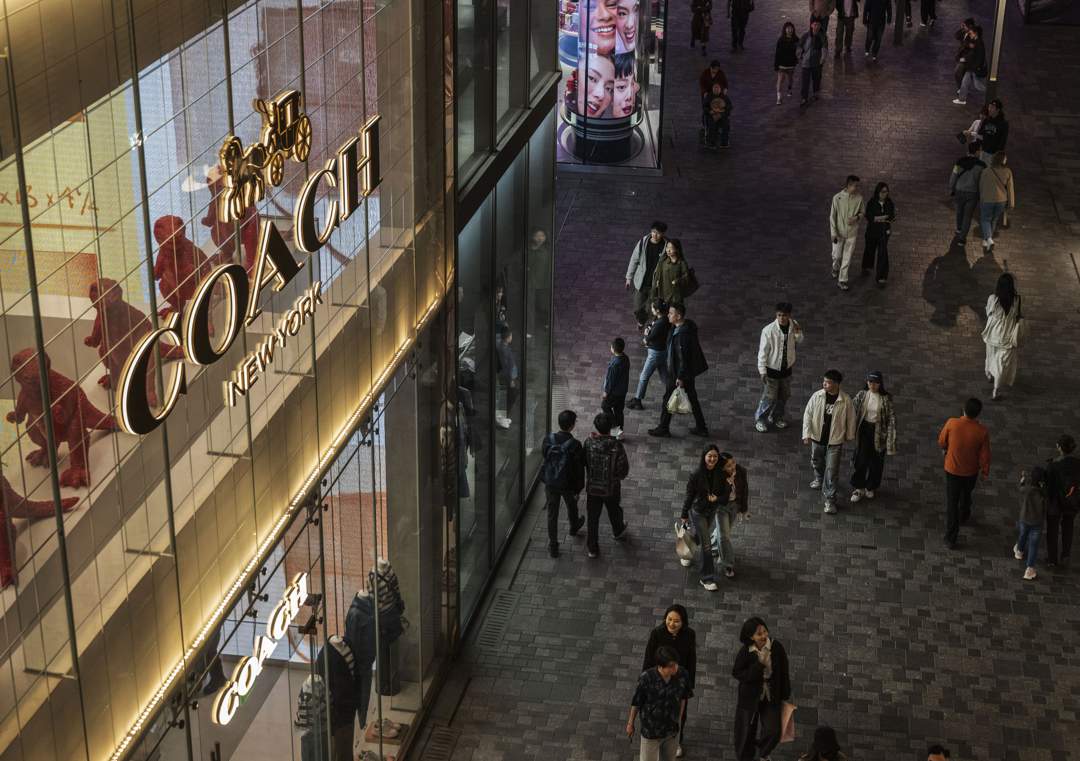China’s Deflation Deepens as Price Wars Escalate: R7 Breakfasts and Coach Bags for R500

China’s economic engine is sputtering under growing deflationary pressure, leading to an aggressive wave of price-cutting across sectors—from everyday meals to luxury goods. In 2025, it’s possible to enjoy a full breakfast for just R7 (about $0.40) or snag a Coach handbag in near-mint condition for only R500 (around $30). But behind these bargains lies a concerning macroeconomic trend: entrenched deflation in the world’s second-largest economy.
Understanding China’s Deflation Spiral
Deflation occurs when prices fall continuously over time, discouraging spending and investment. In May 2025, China’s Consumer Price Index (CPI) dipped -0.1% year-on-year, while the Producer Price Index (PPI) has been in decline for over a year. This downward spiral suggests weak domestic demand despite government attempts to stimulate spending.
More about China’s economy.
The Rise of the Price War Economy
Faced with sluggish demand and overcapacity, Chinese companies across industries are slashing prices aggressively to attract customers. This trend is particularly visible in:
- Dining: Fast food restaurants are offering full breakfast sets for just 3 yuan (approximately R7).
- Retail: E-commerce platforms launch multiple daily flash sales with discounts of up to 90%.
- Luxury resale: A once $450 Coach handbag now sells second-hand for just 219 yuan (~R500).
The Surge of the Second-Hand Economy
China’s second-hand market has become a haven for budget-conscious consumers. Platforms like Xianyu, Plum, Feiyu, and Super Zhuanzhuan have experienced a surge in traffic and listings as both buyers and sellers adjust to new economic realities.
Luxury resale in particular has boomed. According to Reuters, one Beijing outlet was offering authentic Coach handbags for 219 yuan, or roughly $30. Consumers now see second-hand luxury as a smart lifestyle choice, not just a necessity.
Consumer Voices in the New Economy
Mandie Li, a 28-year-old in Beijing’s energy sector, exemplifies the shift in consumer behavior. “I’ve cut back on all big-ticket items,” she explains. After her family’s real estate value dropped by 50% and her salary stagnated, Mandie turned to resale platforms for everything from handbags to electronics.
She’s not alone. A growing number of middle-class shoppers are replacing full-price retail with low-cost alternatives, choosing practicality over prestige.
Policy Headaches for Beijing
China’s leadership, including Premier Li Qiang, has emphasized the need to boost household spending. However, current stimulus efforts—mainly infrastructure-focused—are failing to reach the average consumer.
Experts say the government must pivot toward policies that directly enhance consumer confidence and disposable income. Suggested measures include:
- Targeted subsidies for low- and middle-income families
- Expanded unemployment benefits and social insurance
- Consumption vouchers and tax breaks
The Economic Risks of Deepening Deflation
While falling prices seem good for consumers, deflation poses long-term risks:
- Reduced business profits leading to layoffs or closures
- Increased debt burdens as real debt costs rise
- Postponed consumer spending, worsening the economic slowdown
According to Capital Economics, China’s current overproduction may entrench deflation through 2026 if structural issues aren’t resolved. “There’s no quick fix—just temporary relief,” one analyst warns.
Retailers Caught in a Vicious Cycle
Businesses in China are now stuck in a low-margin, high-volume model that’s difficult to escape. Many e-commerce platforms depend on deep discounts to maintain engagement, but this strategy is eroding brand value and profitability.
Some brands have even resorted to “loss-leader” pricing—selling below cost—in a desperate attempt to maintain visibility and user retention.
Long-Term Impacts on Consumer Culture
What began as a short-term response to economic uncertainty is quickly reshaping China’s consumption patterns:
- Young consumers are delaying purchases of new phones, cars, and homes
- “Smart spending” culture is growing, driven by influencers and budget-savvy platforms
- Used goods are no longer stigmatized but celebrated as sensible choices
Can China Reverse the Trend?
To curb deflation, economists call for a shift from supply-driven growth to demand-driven reform. This includes:
- Strengthening the social safety net
- Promoting wage growth and job creation
- Reducing household debt and improving credit conditions
- Stimulating consumption with direct-to-consumer incentives
“If China doesn’t fix household sentiment, this price war will only get worse,” warns an analyst at Nomura Securities.
Conclusion: Bargains Now, Trouble Later?
China’s price war is delivering short-term savings for consumers, but at what cost? While R7 breakfasts and R500 handbags might sound appealing, they point to a deeper economic malaise that could take years to resolve. The longer deflation persists, the harder it will be to reignite spending and stabilize businesses.
As 2025 unfolds, all eyes will remain on how Beijing balances urgent intervention with long-term reform in an economy reshaped by discounts, disruption, and deflation.
Explore more on global deflation trends.
Further Reading




